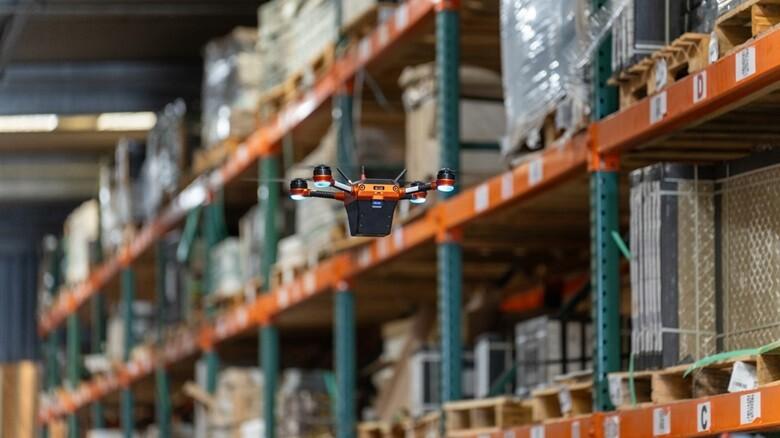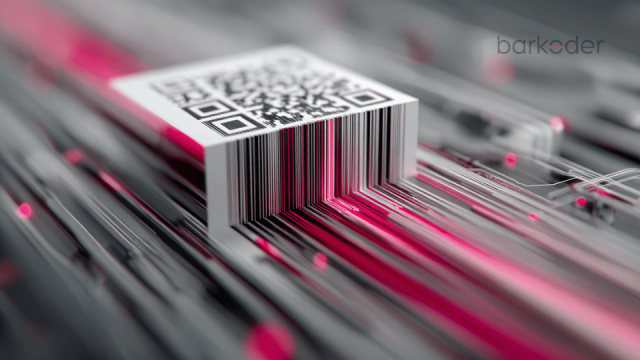
Transforming Warehouse Inventory Management with Drones and Barcode Scanning Technology
In the fast-paced world of logistics and supply chain management, accuracy, efficiency, and speed are the keys to staying competitive. Traditional methods of inventory counting—manual scanning, physical inspections, and paper-based tracking—are often time-consuming, labor-intensive, and prone to human error. Fortunately, emerging technologies like drones combined with advanced barcode scanning solutions are revolutionizing the way warehouses operate.
Cutting-edge technologies like autonomous drones are transforming warehouse operations by boosting efficiency, improving accuracy, and enhancing workplace safety. Once considered tools for hobbyists, drones are now proving indispensable in inventory management, security, and process optimization. Their adoption is accelerating rapidly, with the global warehouse drone market expected to surge from $9.8 billion in 2023 to $34.8 billion by 2033.
The Challenges of Traditional Inventory Management
Manual inventory checks require workers to climb ladders, move pallets, and scan items one by one. This process not only consumes hours—or even days—but also significantly increases the risk of injuries from falls, heavy lifting, or accidents with forklifts. Fatigue from repetitive tasks can lead to human errors, resulting in miscounts or misplaced items that disrupt supply chain operations.
In large warehouses with thousands of SKUs spread across tall shelving units, the inefficiency becomes even more evident. Workers may need to navigate long aisles multiple times, relying on paper lists or handheld scanners that further slow progress. In busy facilities, inventory checks can interfere with day-to-day operations, as forklifts, pallet jacks, and workers compete for space in narrow aisles.
Additionally, manual methods often require downtime or after-hours work to avoid disrupting normal warehouse activity, which can drive up labor costs. When inventory is not updated in real time, managers face blind spots in stock visibility—leading to delayed orders, stockouts, or overstock situations that directly impact customer satisfaction and profitability.
The Rise of Drone-Based Scanning
Drones equipped with high-resolution cameras and barcode scanning technology offer a game-changing solution. They can fly through aisles, scan inventory from hard-to-reach locations, and feed real-time data into warehouse management systems.
Key benefits include:
Speed – Drones can complete inventory checks in a fraction of the time compared to manual methods.
Accuracy – AI-powered barcode recognition reduces the risk of human error.
Safety – Workers no longer need to climb racks or operate heavy equipment for stock counting.
How Barcode Scanning Enhances Drone Efficiency
While drones handle the mobility and reach, barcode scanning ensures that every item is tracked with pinpoint precision. Modern scanning software is designed to read barcodes from various angles, in low light conditions, and even when labels are partially damaged or obscured. This means drones don’t need to hover in a fixed position for several seconds—they can keep moving while still capturing accurate data, dramatically increasing the efficiency of inventory checks.
Advanced algorithms in today’s scanning technology can also filter out background noise, correct for motion blur, and recognize multiple barcode formats in a single pass. Combined with high-resolution cameras or dedicated scanning sensors, drones can cover thousands of square meters of warehouse space in a fraction of the time it would take a human worker.
In addition, this flexibility allows scanning operations to continue uninterrupted, even in challenging warehouse environments where lighting, dust, or cramped spaces would typically slow down manual counting. The end result is a smooth, fast, and highly accurate data collection process that keeps inventory records up-to-date without disrupting daily operations.
Integration with Warehouse Management Systems (WMS)
The real power of this technology lies in its seamless integration with Warehouse Management Systems (WMS). Once a drone scans an item’s barcode, the data is transmitted and instantly updated within the system, providing warehouse managers with a live, accurate view of inventory levels. This real-time visibility eliminates the guesswork from stock control, allowing for faster, data-driven decision-making. By ensuring that stock counts are always correct, businesses can significantly reduce stockouts, prevent costly overstocking, and streamline order fulfillment processes.
Furthermore, this integration enhances operational efficiency by automating data entry and reducing the risk of human error, freeing up staff to focus on higher-value tasks. Over time, these improvements not only optimize inventory turnover but also contribute to reduced operational costs and improved customer satisfaction.
Future Potential
As AI, machine vision, and autonomous navigation continue to advance, drones could eventually perform not just inventory checks but also assist in restocking, order picking, and predictive inventory planning. Coupled with the rapid evolution of barcode scanning technology, the future of warehouse automation looks brighter than ever.
The barKoder Linux SDK delivers fast, reliable, and headless barcode scanning for server-side applications and embedded systems. It processes images and outputs barcode results as a list, ensuring optimal performance in demanding environments.
Perfect for diverse use cases, the SDK runs seamlessly in private clouds, on-premise servers, and hardware such as drones, robots, and edge devices. And it has already been validated in multiple use-cases to be the optimal solution even in the most fast-paced environments like working with autonomous drones in a warehouse.
For quick setup, barKoder includes ready-made bindings for C++ and Python.
Conclusion
Drone-powered inventory management is redefining how warehouses conduct stock checks. By delivering unmatched efficiency, pinpoint accuracy, and significant cost savings—while providing real-time data—drones offer a powerful answer to today’s inventory challenges. Although some hurdles remain, ongoing advancements in AI, sensors, and robotics are rapidly expanding their capabilities. Businesses that embrace this technology now will not only optimize their inventory processes but also gain a competitive edge in an increasingly fast-paced market.






